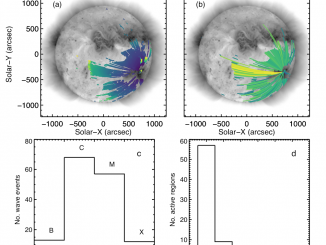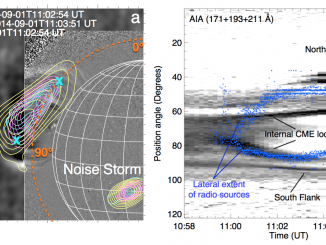The statistical relationship between global EUV waves and other solar phenomena
by D. Long et al.*
Solar eruptions are associated with a variety of different phenomena, including solar flares, coronal mass ejections, Type II radio bursts, solar energetic particles and global coronal EUV waves (commonly known as “EIT waves”, e.g., Warmuth, 2015). However, the relationship between global waves and these other phenomena is not well defined. Although global waves have traditionally been studied using single event case studies, several statistical studies have been performed, with Thompson […]


